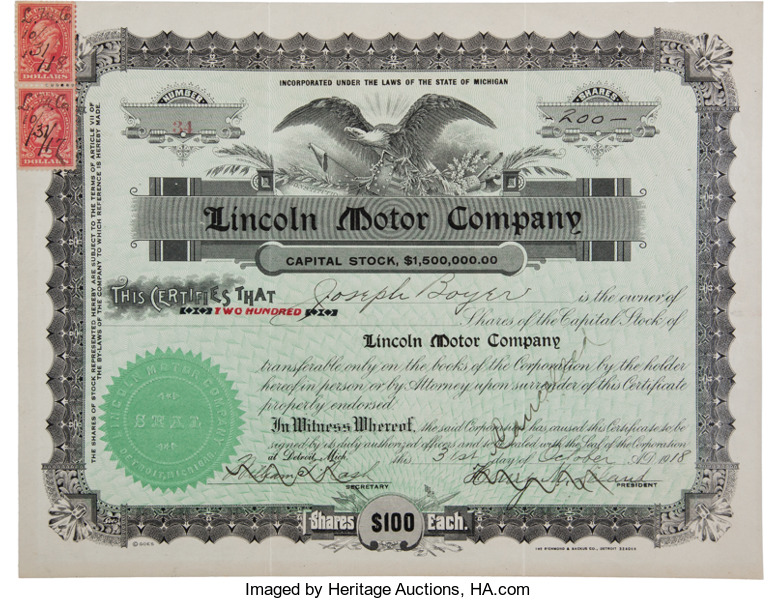
By Jim O’Neal
Doctors called it a “chauffeur’s fracture,” the radial styloid or wrist fracture that occurred when a driver tried to start a horseless carriage by turning the crank at the front of the car. If the engine backfired, the crank would spin backward, often causing broken bones. Those early automobiles motoring down the streets of American cities were considered engineering marvels.
But what a challenge to start!
The two requirements were a blacksmith’s arm and a perfect sense of timing. The driver had to adjust the spark and the throttle before jumping out to turn the crank mounted on the car’s outside front grill. Once the spark caught and the motor fired, the driver dashed back to the control to adjust the spark and throttle before the engine could die. Oh, and if the car started, but was in gear, it could lurch forward and run over the cranker!
Sound farfetched?
In 1908, tragedy struck when Byron Carter (1863-1908) – inventor of the Cartercar – died after trying to start a stalled car. The crank hit him in the jaw. Complications with gangrene set in and he died of pneumonia. It was a fluke involving a stalled motorist he was trying to help. The driver forgot to retard the spark. Whamo!
The car involved was a new Cadillac, one of the premier luxury brands, and Carter was good friends with the man who ran Cadillac, Henry Leland (who also owned Lincoln). When Leland found out his friend had been killed, he vowed: “The Cadillac car will kill no more men if we can possibly help it!” Cadillac engineers finally succeeded in manufacturing an electric self-starter, but were never able to scale it for commercial use.
Enter Charles Franklin Kettering (1876-1958), a remarkable man (in the same league as Thomas Edison) whose versatile skills included engineering and savvy business management. He was a prolific inventor with 186 notable patents. One of them was a self-starter small enough to fit under the hood of a car, running off a small storage battery. A New York inventor (Clyde J. Coleman) had applied for a patent in 1899 for an electric self-starter, but it was only a theoretical solution and never marketed.
After graduating from Ohio State College of Engineering, Kettering went to work for the invention staff at National Cash Register (NCR) company. He invented a high-torque electric motor to drive a cash register, allowing a salesperson to ring up a sale without turning a hand-crank twice each time. After five years at NCR, he set up his own laboratory in Dayton, Ohio. Working with a group of engineers, mechanics and electricians, he developed the new ignition system for the Cadillac Automobile Company.
Leland sold Cadillac to General Motors in 1909 for $4.5 million and there is no record of any Cadillac ever killing another person, at least from turning a crank to start the engine! Since Cadillac had been formed from remnants of the Henry Ford Company (the second of two failed attempts by Ford), it was renamed for Antoine Laumet de La Mothe, sieur de Cadillac (the founder of Detroit 200 years earlier).
Later, Leland would sell Lincoln, his other marque luxury brand, to Ford Motor Company for a healthy $10 million, while Kettering and his crew formed Dayton Engineering Laboratories Co., which became Delco, still a famous name in electronic automobile parts. Kettering went on to have a long, sterling career and was featured on the cover of Time on Jan. 9, 1933 … the week after president-elect Franklin Delano Roosevelt was named the magazine’s Man of the Year (Jan. 2).
My only quibble is the work Kettering did with Thomas Midgley Jr. in developing Ethyl gasoline, which eliminated engine knock, but loaded the air we breathe with lead (a deadly neurotoxin) for the next 50 years. And he developed Freon … a much safer refrigerant, but which released CFCs, which will be destroying our atmospheric ozone for the next 100-200 years.
I don’t recall ever personally turning an engine crank. My cars went from ignition keys to keyless and I plan to skip the driverless models and wait for a Jet-Cab … unless Jeff Bezos can provide an Uber-style version using one of his drones.
Things change.
 Intelligent Collector blogger JIM O’NEAL is an avid collector and history buff. He is president and CEO of Frito-Lay International [retired] and earlier served as chair and CEO of PepsiCo Restaurants International [KFC Pizza Hut and Taco Bell].
Intelligent Collector blogger JIM O’NEAL is an avid collector and history buff. He is president and CEO of Frito-Lay International [retired] and earlier served as chair and CEO of PepsiCo Restaurants International [KFC Pizza Hut and Taco Bell].
